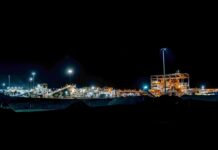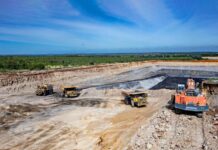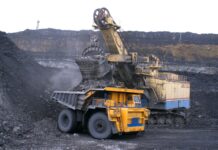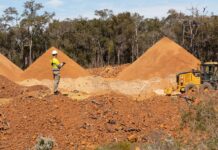BHP’s first electric excavator operational at Yandi

BHP (ASX: BHP) has taken another important step on its operational decarbonisation journey with the first electric excavator in its fleet now operational at the Yandi iron ore mine in the Pilbara, WA.
Instead of a diesel engine, the R 9400 E Liebherr electric excavator has an electric motor, with power fed to the machine by a trailing cable.
Equipped with Liebherr’s autonomous cable reeler for optimal on-site mobility, this innovation boosts productivity and operator safety.
WA Iron Ore (WAIO) asset president Tim Day says a reduction in diesel is essential to reduce operational greenhouse gas (GHG) Scope 1 and 2 emissions by at least 30% by FY30 from FY20 levels and achieve net zero operational GHG emissions by CY50.
“Electrification of our fleet is our preferred solution to displace greenhouse gas emissions from using diesel — from trucks to trains to excavators — we’re working hard to electrify our equipment,” he said.
“Collaborations with partners like Liebherr are critical to accelerate development of the technology required to reduce diesel emissions, while ensuring we continue to improve the safety and productivity of our operations.”
Liebherr-Australia sales and marketing executive general manager Brian Boitano says the R 9400 E is a testament to Liebherr’s dedication to providing innovative and efficient zero emission solutions for the mining sector.
“We are thrilled to partner with BHP, a forward-thinking industry leader, to introduce our proven electric excavators into their operations and to help them move forward in their decarbonisation journey,” he said.
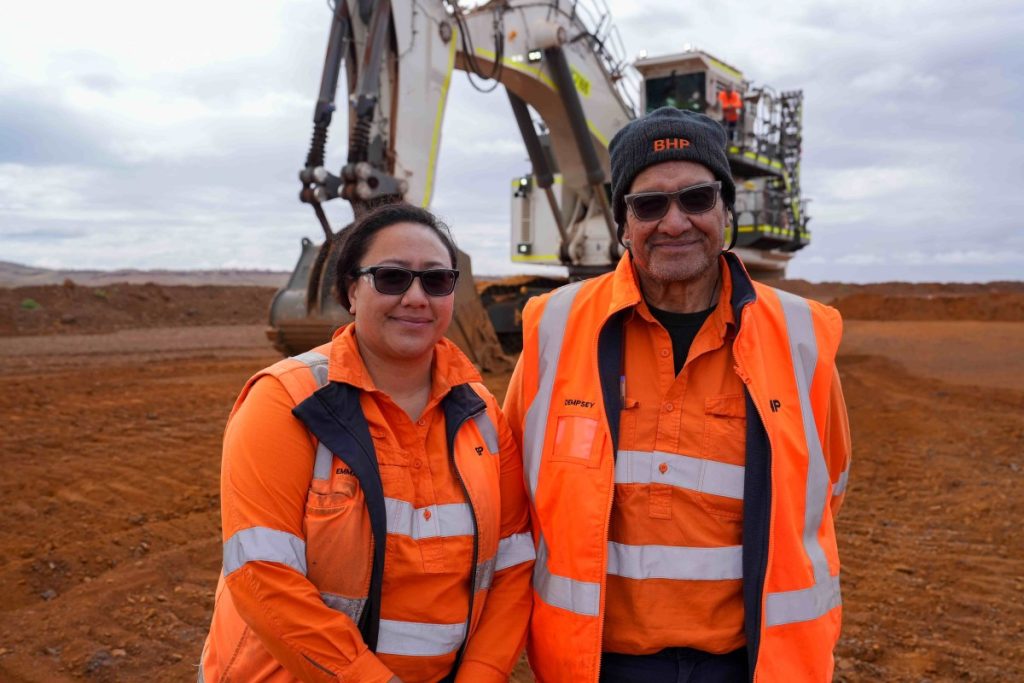
Father-daughter duo, Dempsey and Emma Whakaruru, are part of the teams responsible for operating and maintaining the new electric excavator, with Dempsey operating the machines and Emma coordinating and maintaining them.
Mr Whakaruru says he has operated diggers for a number of years, starting from the first ONK that BHP ever brought to site.
“The operation and everything else is exactly the same as a normal digger, but a lot quicker,” he said.
“Technology is where we need to move to, and this is how the future’s looking.
“The future of the industry is here with electrification.
“It’s just an awesome thing for me, and with the [35 years] that I’ve been with BHP, I’m really proud.”
Ms Whakaruru comments on this opportunity to work with her father.
“Together, both our different roles are complementary to one another and being able to power our digger and move our tonnes,” she said.
“The opportunity to work on the electric digger is probably the only time in both our careers that we’re able to work together.”
Learn more about BHP’s operational decarbonisation journey here.






